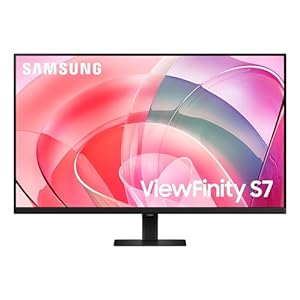In billions of years, when our Solar runs out of gasoline, it should broaden outwards, swallowing up the planets closest to it. Whereas life on Earth will probably be SOL eons earlier than this happens, the planet itself could endure, in keeping with current observations of a rocky planet that seems to have survived the dying of its personal host star.
Certainly, this example seems to have performed out some 4,000 light-years from right here. Astronomers used an uncommon bending of distant mild to find a star system the place issues have gone awry, but an Earth-like planet has by some means managed to outlive.
The invention was made due to a quirk of physics known as microlensing, during which the gravity of gigantic celestial objects bends mild in a approach that may amplify it. On this case, the star system handed in entrance of one other star, magnifying its mild. When UC Berkeley astronomers took a more in-depth look, the height of the lensing had handed, and the star’s mild had light. However as they noticed the star system, the intense mild of the background star had been changed by darkness. The one conclusion they may attain was that this object, which was huge sufficient to amplify mild with its gravity however forged little mild of its personal, was a white dwarf—the remnant core of a once-larger star that has exhausted its nuclear gasoline.
Regardless of the darkness, the astronomers had been nonetheless in a position to decide that the white dwarf was orbited by two objects: a brown dwarf (an object bigger than a fuel large planet, however smaller than a star) and and a terrestrial (rocky) exoplanet that’s round 20% greater than Earth.
The latter could possibly be a glimpse into our personal planet’s future, the astronomers famous of their examine, published in Nature Astronomy. In about 6 billion years from now, our Solar is predicted to expire of the hydrogen gasoline in its core. Because the nuclear fusion course of slows, the Solar’s core will contract and warmth up. As a substitute of hydrogen isotopes fusing into helium, the helium will fuse into heavier components like carbon, oxygen, and nitrogen, and the dying star will broaden.
Mars, the fourth planet from the Solar, will probably survive this disaster, they wrote, however Earth’s ultimate destiny “stays unsure.” Relying on how huge the pink large grows, Earth could discover itself sharing the destiny of Venus and Mercury—getting swallowed up and annihilated. Or, like its just lately found doppelganger, Earth could also be far sufficient away to outlive.
The excellent news, in keeping with Keming Zhang, a postdoctoral fellow at UC San Diego, who led the analysis throughout his time at UC Berkeley, is that every little thing on Earth will probably be useless far earlier than then.
“In any case, planet Earth will solely be liveable for round one other billion years, at which level Earth’s oceans could be vaporized by runaway greenhouse impact—lengthy earlier than the danger of getting swallowed by the pink large,” he mentioned in a statement. To be clear, he’s referring to a naturally occurring warming because of the Solar’s superior age, not a greenhouse impact brought on by human exercise.
The 2 planets orbiting this white dwarf are simply the most recent proof {that a} star’s dying doesn’t essentially spell doom for its orbiting planets. In June, one other paper described a plucky fuel planet, someplace between Neptune and Saturn in measurement, that seems to be doing just fine, regardless of being in shut orbit round a pink large (albeit, with floor temperatures scorching sufficient to soften metal).
If this greatest case state of affairs does play out, don’t increase your hopes that life will spontaneously spring up as soon as extra on Earth. The dramatic modifications to the photo voltaic system would end in Earth’s orbit taking it additional away from the Solar than Mars, exterior the liveable zone the place liquid water can exist, in keeping with the researchers.
Nonetheless, Zhang selected to take a look at the intense aspect. The Solar’s growth could make Earth a blighted, frigid wasteland, however it should have a pleasant impact on the moons round Jupiter and Saturn, a few of which have frozen water. These moons might theoretically change into liveable through the Solar’s pink dwarf part, and, if humanity nonetheless exists, it might discover refuge on them, he mentioned. So we’ve received that going for us, which is good. I believe.
Trending Merchandise

Samsung 24” FT45 Series FHD 1080p Computer Monitor, 75Hz, IPS Panel, HDMI, DisplayPort, USB Hub, Ultra Thin Bezels, Ergonomic Design, Height Adjustable Stand, 3 Year Warranty, LF24T454FQNXGO, Black

KEDIERS PC CASE ATX 9 PWM ARGB Fans Pre-Installed, Mid-Tower Gaming PC Case, Panoramic Tempered Glass Computer Case with Type-C,360mm Radiator Support

ASUS RT-AX88U PRO AX6000 Dual Band WiFi 6 Router, WPA3, Parental Control, Adaptive QoS, Port Forwarding, WAN aggregation, lifetime internet security and AiMesh support, Dual 2.5G Port

Wireless Keyboard and Mouse Combo, MARVO 2.4G Ergonomic Wireless Computer Keyboard with Phone Tablet Holder, Silent Mouse with 6 Button, Compatible with MacBook, Windows (Black)

Acer KB272 EBI 27″ IPS Full HD (1920 x 1080) Zero-Frame Gaming Office Monitor | AMD FreeSync Technology | Up to 100Hz Refresh | 1ms (VRB) | Low Blue Light | Tilt | HDMI & VGA Ports,Black

Lenovo Ideapad Laptop Touchscreen 15.6″ FHD, Intel Core i3-1215U 6-Core, 24GB RAM, 1TB SSD, Webcam, Bluetooth, Wi-Fi6, SD Card Reader, Windows 11, Grey, GM Accessories

Acer SH242Y Ebmihx 23.8″ FHD 1920×1080 Home Office Ultra-Thin IPS Computer Monitor AMD FreeSync 100Hz Zero Frame Height/Swivel/Tilt Adjustable Stand Built-in Speakers HDMI 1.4 & VGA Port








